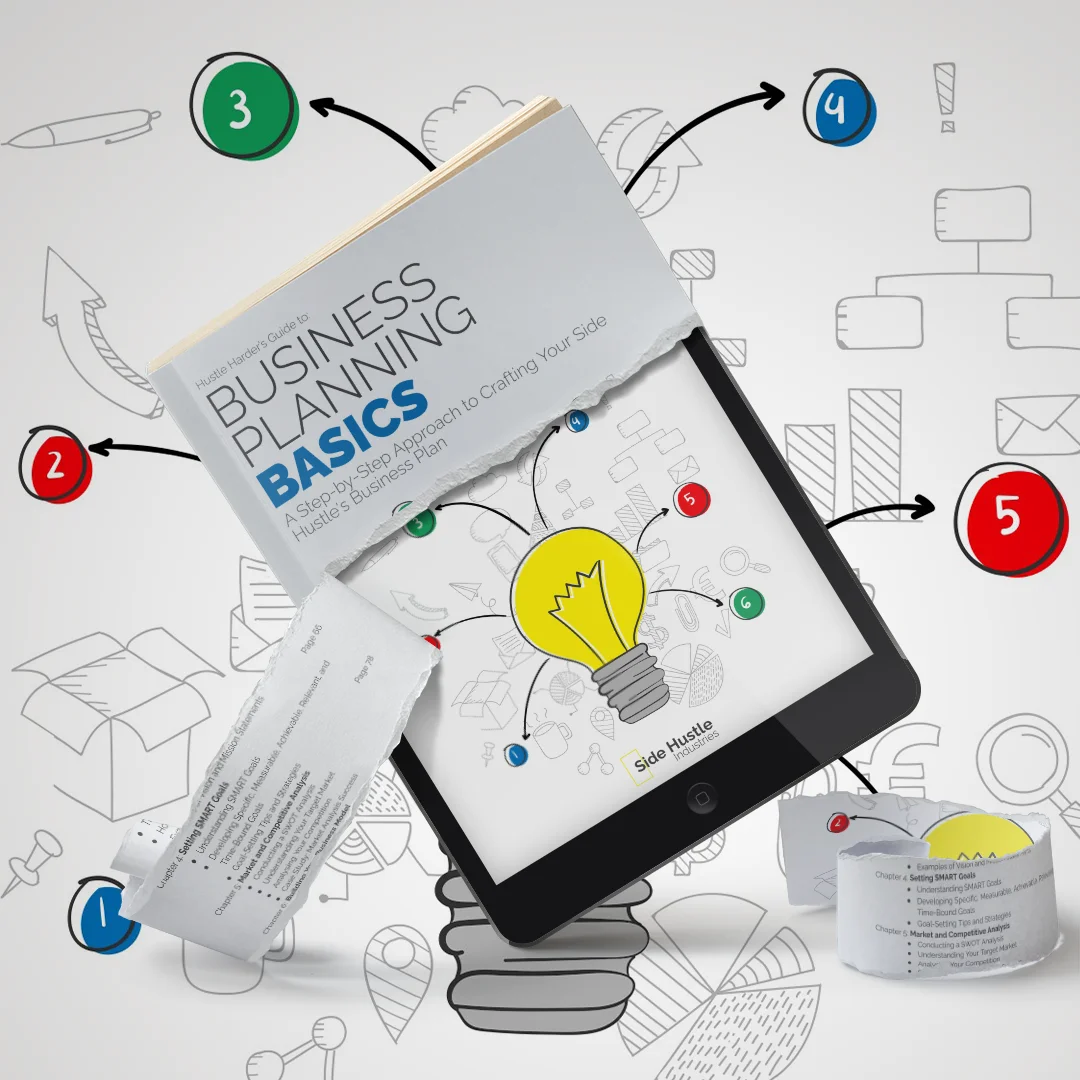
Budgeting is a fundamental aspect of financial planning for your side hustle. A well-structured budget helps you manage your finances efficiently, allocate resources effectively, and ensure that your business remains financially stable. In this blog, we’ll delve into the importance of budgeting for your side hustle, how to create a budget, and strategies for effective budget management.
The Importance of Budgeting
Budgeting is critical for several reasons:
- Resource Allocation: A budget helps you allocate your resources effectively, ensuring that you have enough funds for all your business’s needs, from operating expenses to growth initiatives.
- Financial Planning: A budget serves as a blueprint for your business’s financial future. It allows you to set financial goals and track your progress.
- Cost Control: By creating a budget, you gain insight into your anticipated expenses. This knowledge enables you to identify areas where you can control costs and reduce unnecessary spending.
- Cash Flow Management: A budget helps you manage your cash flow effectively, ensuring that you have the funds to cover expenses and avoid cash shortages.
- Investor Confidence: If you’re seeking investors or lenders, a well-structured budget demonstrates your commitment to financial responsibility and instils confidence in potential financial partners.
- Performance Evaluation: Regularly comparing your actual financial performance to your budget allows you to evaluate your progress, make informed decisions, and adapt your financial strategy as needed.

Creating Your Budget
To create an effective budget for your side hustle, follow these steps:
List All Income Sources:
Start by listing all your income sources. This includes revenue from sales, services, investments, side gig income, or any other source of funds. Be sure to differentiate between your business income and personal income.
Identify Fixed and Variable Expenses:
Distinguish between fixed expenses (those that remain relatively constant, such as rent or loan payments) and variable expenses (those that fluctuate with business activity, such as marketing or utilities).
Allocate Funds for One-Time Expenses:
If you have any one-time or irregular expenses, allocate funds for them in your budget. These could include equipment purchases, marketing campaigns, or legal fees.
Consider Taxes:
Plan for taxes in your budget. Be aware of your tax obligations, whether they are income taxes, sales taxes, or other levies relevant to your business.
Emergency Fund:
Allocate a portion of your budget to an emergency fund or contingency reserve. This fund acts as a safety net to cover unexpected expenses or income shortfalls.
Debt Service:
If your side hustle has loans or credit lines, schedule loan repayments as part of your budget.
Review Historical Data:
If your side hustle has been operating for some time, review historical financial data to identify spending patterns and trends. This information can be valuable for budgeting.
Factor in Seasonality:
If your business experiences seasonality, account for it in your budget. Consider how your income and expenses fluctuate throughout the year.
Savings and Investments:
If your budget allows, allocate funds for savings or investments. This could be for your retirement, expansion, or other financial goals.
Regular Review:
A budget is not a static document. Regularly review and update it to ensure that it remains aligned with your business’s financial goals and changing circumstances.

Strategies for Effective Budget Management
Creating a budget is just the first step; effective budget management is crucial for financial success. Here are some strategies to manage your budget effectively:
Track Actual vs. Budgeted Expenses:
Regularly compare your actual expenses to your budgeted expenses. This comparison helps you identify discrepancies and take corrective action if necessary.
Prioritise Spending:
Focus your spending on essential expenses that directly contribute to your side hustle’s success. Cut back on non-essential costs, especially in the early stages of your business.
Budget for Profit:
Don’t just aim to break even. Your budget should include a target for profit. This profit is what you’ll reinvest in your business or use for personal financial goals.
Manage Debt Carefully:
If you have loans or credit lines, manage them carefully. Paying down debt should be a priority in your budget, as interest can be a significant cost.
Regularly Review Your Budget:
Schedule regular reviews of your budget to ensure that it remains relevant and effective. If your business experiences significant changes, update your budget accordingly.
Emergency Fund:
Maintain your emergency fund or contingency reserve. This fund can be a lifesaver when unexpected expenses or income disruptions occur.
Avoid Overcommitting:
Be cautious about overcommitting your budget to fixed expenses. Maintaining flexibility in your budget allows you to adapt to changing circumstances.
Monitor Cash Flow:
Stay vigilant about your cash flow. Ensure that you have sufficient funds to cover your expenses and avoid cash shortages.
Seek Professional Advice:
If you’re unsure about budgeting or need help managing your finances, consider seeking advice from a financial advisor or accountant. They can provide valuable insights and guidance.
Budgeting is an essential practice for managing the financial health of your side hustle. It provides you with the framework to allocate resources effectively, set financial goals, and track your progress. By creating a well-structured budget and effectively managing it, you’ll have a powerful tool to maintain financial stability, make informed decisions, and achieve your business and personal financial goals. Remember that budgeting is a dynamic process, and regularly reviewing and adapting your budget is key to long-term success.

*Also available on Amazon in Kindle, Soft Cover & Hard Cover formats. —> Click Here.
